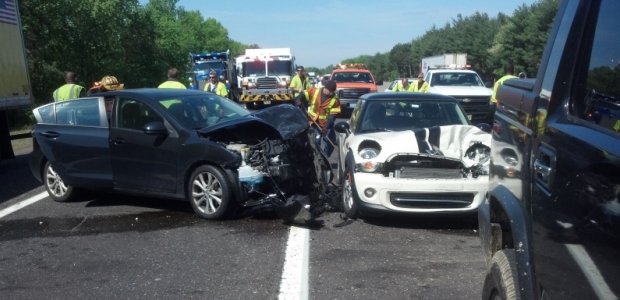
NIOSH Sets Web Meeting on Motor Vehicle Safety Center
The public web meeting will take place Sept. 14 from 1-5 p.m. Eastern.
NIOSH will be hosting a public web meeting on Sept. 14 and also taking written comments about future directions for its Center for Motor Vehicle Safety. Announced in the Federal Register, the meeting aims to ensure the center is addressing goals outlined in its Strategic Plan for Research and Prevention, 2014-2018, meeting stakeholders' needs, and working effectively to prevent work-related crashes and injuries.
Written comments are due by Oct. 14. To submit a comment, visit http://www.regulations.gov and enter CDC-2016-0067 in the search field.
The meeting will be held from 1-5 p.m. Eastern time or after the last public commenter in attendance has spoken, whichever occurs first.
Motor vehicle crashes are the leading cause of work-related injury deaths in the United States, NIOSH notes, with 22,000 workers having died in work-related motor vehicle crashes between 2003 and 2014. In 2013 alone, motor vehicle crashes at work cost U.S. employers $25 billion—$65,000 per nonfatal injury and $671,000 per death, according to the agency.
The notice says NIOSH is especially interested in comments that address these topics:
1. What research should NIOSH consider pursuing during the remaining period covered by the NIOSH Center for Motor Vehicle Safety: Strategic Plan for Research and Prevention, 2014-2018?
2. What research should NIOSH begin planning to initiate beyond 2018?
3. Are there additional external research partners NIOSH should work with?
4. What specific resources or tools are most urgently needed to move prevention of work-related crashes forward?
5. What audience(s) for workplace crash-prevention information should NIOSH prioritize in planning its communication strategy?
6. What are your organization's preferred digital communication channels for receiving workplace crash-prevention information (e.g., email, social media, eNewsletter, Web page)?
7. How have you or your organization used information from the NIOSH Center for Motor Vehicle Safety? Of particular interest is information on changes made in workplace motor vehicle safety programs based on research results and/or communication materials and the impact of those changes.
For information about the NIOSH Center for Motor Vehicle Safety, visit www.cdc.gov/niosh/motorvehicle.